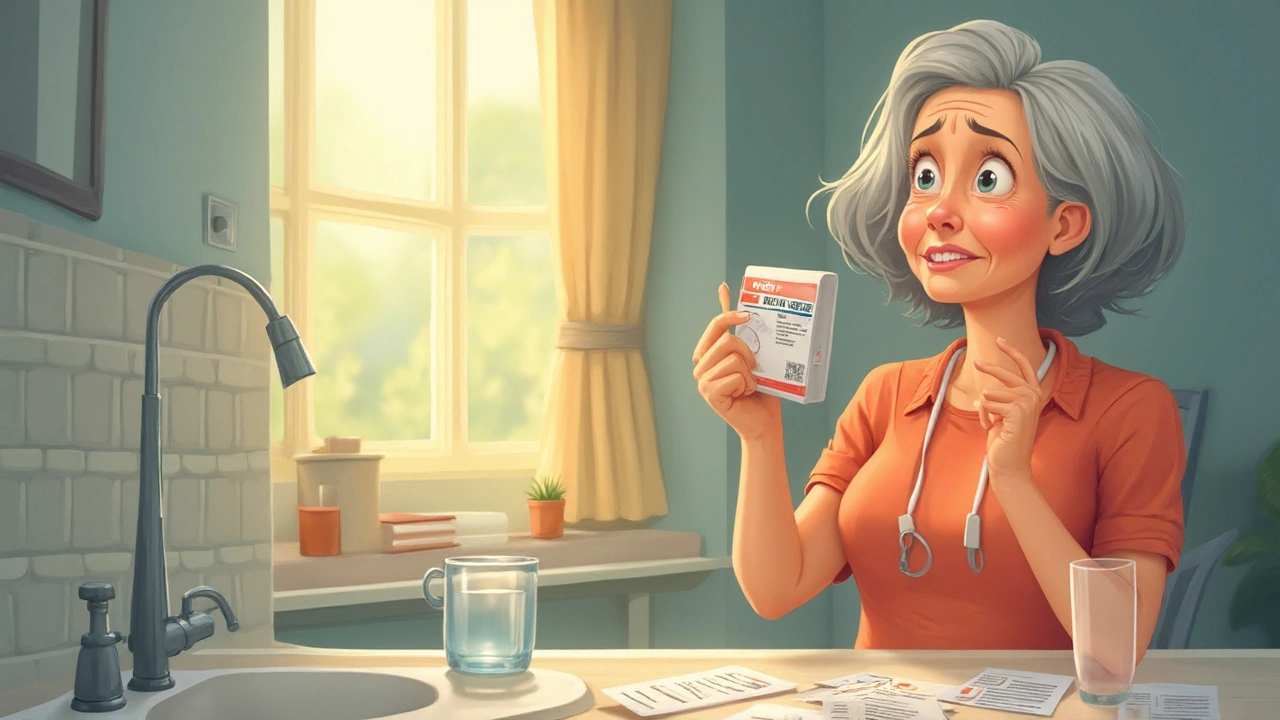Bladder Control: Simple Steps to Manage Urinary Health
Having trouble holding your pee or dealing with sudden leaks can feel embarrassing, but you’re not alone. Millions of people face bladder control issues at some point, and most of them get better with a few everyday changes. Below you’ll find straightforward habits and exercises that actually work, so you can feel more confident and stay comfortable.
Everyday habits that help
First, look at what you drink. Too much caffeine or alcohol can irritate the bladder and make you run to the bathroom more often. Try swapping one cup of coffee for water or herbal tea and see if the urge drops. Staying hydrated is still important—aim for about eight glasses a day—but spread them out instead of gulping large amounts at once.
Next, watch the timing of bathroom trips. Going on a set schedule, like every three to four hours, trains the bladder to hold more urine. Even if you don’t feel a strong urge, sit on the toilet for a minute and try to empty completely. This empty‑full routine helps the muscles get used to regular emptying and reduces surprise leaks.
Another simple trick is to avoid “holding it” for long periods. When you feel the need, find a bathroom quickly rather than waiting. The longer the bladder stays full, the weaker the muscles can become over time.
Exercises and training
Pelvic floor exercises, often called Kegels, are the backbone of bladder control. To do a Kegel, tighten the muscles you’d use to stop the flow of urine, hold for five seconds, then relax for five seconds. Start with five repetitions a day and work up to three sets of ten. Consistency matters more than speed, so keep a routine.
If you’re unsure you’re doing them right, try the “stop‑start” method while urinating. Begin to pee, then pause the stream a few times. This teaches you how the pelvic floor feels when it’s engaged.
Bladder training takes a bit of patience. Pick a target interval—say four hours—then gradually increase it by fifteen‑minute steps each week. If you have an accident, don’t get discouraged; simply return to the last comfortable interval and keep building.
Weight management can also affect bladder control. Extra belly fat puts pressure on the bladder and pelvic floor, making leaks more likely. Even modest weight loss through walking or light cardio can relieve that pressure and improve muscle function.
Finally, consider dietary tweaks. Certain foods like spicy dishes, citrus fruits, and artificial sweeteners can irritate the bladder. Keep a food diary for a week; note any foods that seem to trigger urgency and try cutting them out to see if symptoms ease.
These habits and exercises are easy to start, require no special equipment, and fit into most daily routines. By adjusting drinks, timing bathroom trips, doing regular Kegels, and training the bladder gradually, you’ll likely notice fewer leaks and more confidence in just a few weeks.
Remember, if problems persist despite these steps, it’s worth talking to a healthcare professional. They can rule out infections or other conditions that need specific treatment. But for many, the simple changes above are enough to get bladder control back on track.
Oxytrol patches help with overactive bladder symptoms like urgent urination and leaks. Learn how it works, application tips, who it's for, and potential side effects.

